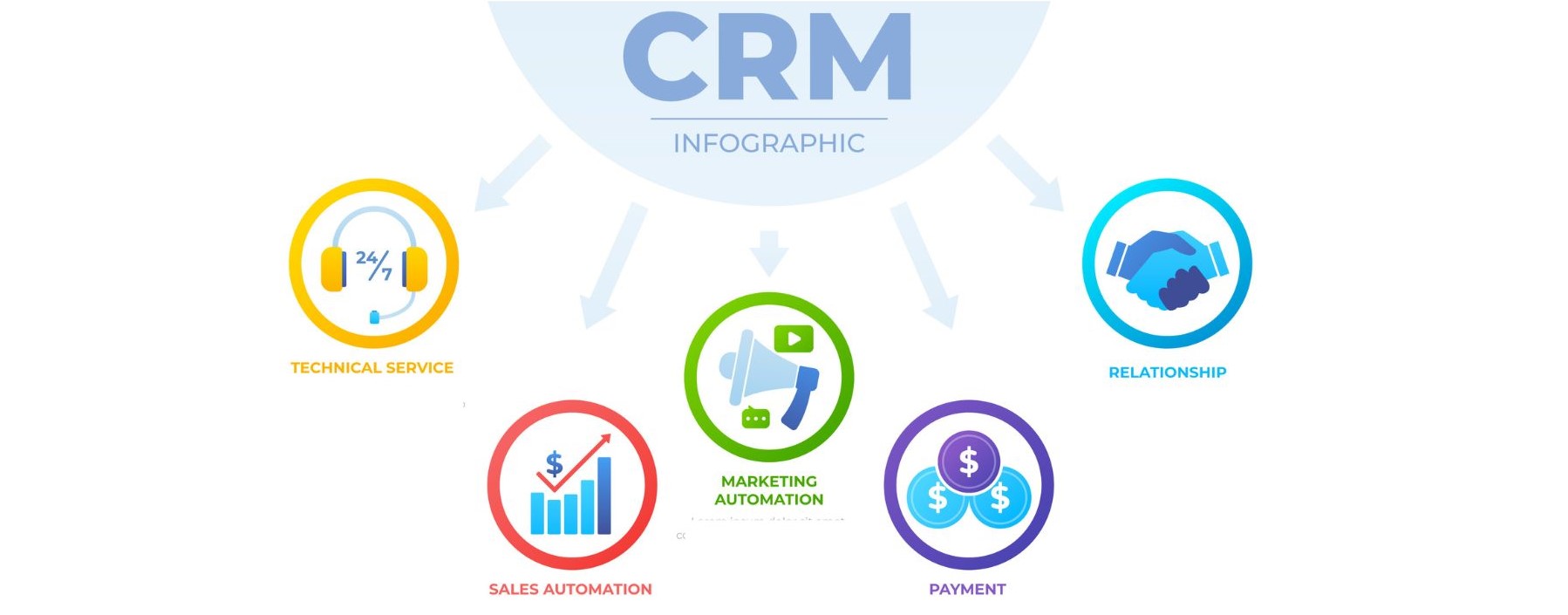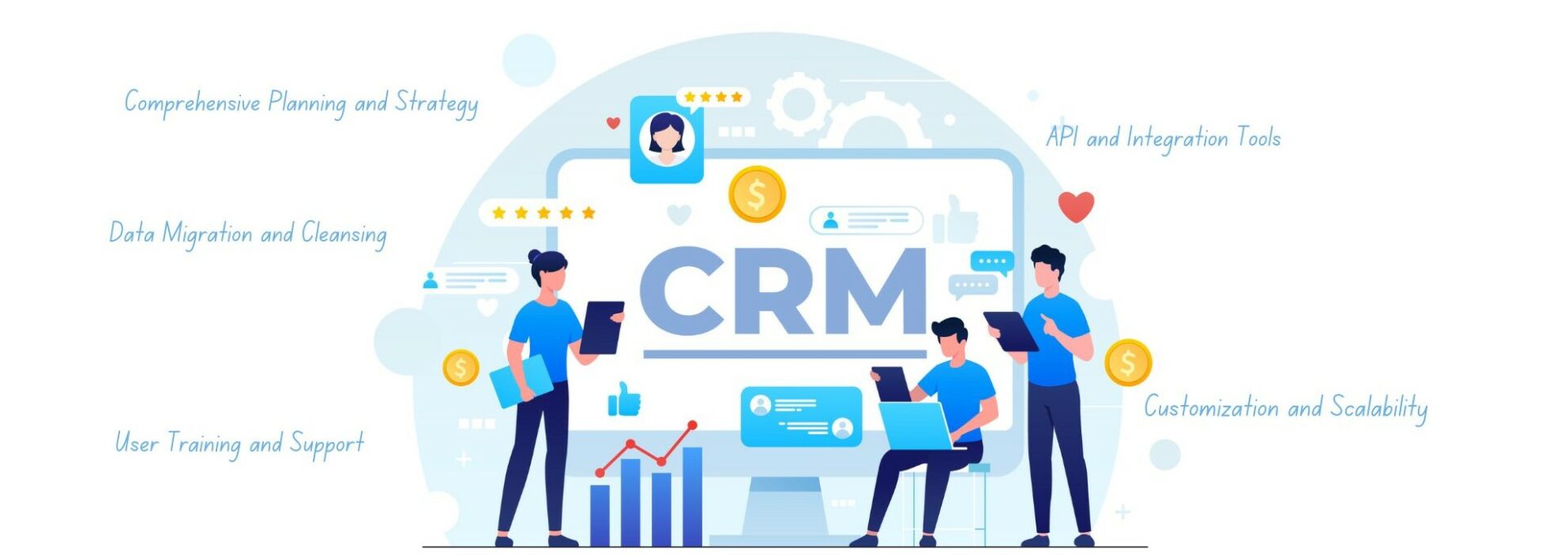Customer Relationship Management (CRM) systems have become indispensable tools for businesses looking to enhance customer interactions and streamline processes. CRM implementation has become a common practice as companies strive to meet the demands of a highly competitive market. However, integrating CRM systems can be complex, fraught with challenges that can impede the seamless management of customer relationships. In this first part of the article, we will explore the most common CRM integration problems businesses face and the intricacies behind each issue.

Understanding CRM and Its Importance
Customer Relationship Management (CRM) is a comprehensive approach to managing a company’s interactions with its current and potential customers. A well-implemented CRM system allows businesses to organize, automate, and synchronize sales, marketing, customer service, and technical support efforts. It enables them to build stronger customer relationships, improve customer retention, and foster loyalty.
A CRM system acts as a centralized repository for customer data, storing valuable information such as contact details, purchase history, and communication records. This data is a foundation for delivering personalized experiences and targeted marketing campaigns. As businesses grow, a robust CRM system becomes even more critical to efficiently handle the expanding customer base.
Common CRM Integration Problems
1. Data Silos and Fragmentation
One of the primary challenges faced during CRM integration is the presence of data silos. Organizations often maintain separate databases for different departments or functions, leading to data fragmentation. This can hinder the free flow of information between teams and create inconsistencies in customer data. As a result, couples may lack a holistic view of customer interactions, leading to missed opportunities and suboptimal decision-making.
Resolution: To overcome this issue, businesses should focus on data integration and standardization. Unifying data from various sources into a comprehensive database ensures seamless information flow across departments. Adopting data standardization practices ensures consistency and accuracy across all customer data points.
2. Insufficient User Adoption
Even with the best CRM software, its effectiveness relies heavily on user adoption. Employees may resist implementing a new CRM system due to the learning curve, fear of change, or a lack of understanding of its benefits. This reluctance can hamper the system’s successful integration and compromise its potential to enhance customer relationship management.
Resolution: Encouraging user adoption requires effective training and support. Businesses should invest in comprehensive training programs highlighting the CRM system’s advantages and empowering employees to use it effectively. Providing ongoing support and addressing user concerns promptly creates a positive user experience and increases adoption rates.
3. Integration with Existing Systems
In many cases, businesses already have established systems for various functions, such as accounting, marketing automation, and customer support. Integrating the CRM system with these existing tools can be complex and time-consuming. Incompatibilities between systems may lead to data transfer issues, resulting in data loss or duplication.
Resolution: Leveraging Application Programming Interfaces (APIs) and integration tools can simplify connecting the CRM system with existing software. APIs enable seamless data flow between systems, ensuring a unified view of customer information. Prioritizing integration planning and testing helps identify and address compatibility issues early, ensuring a smooth integration process.
4. Data Quality and Cleansing
Data is the lifeblood of any CRM system, and its accuracy is paramount for successful implementation. Poor data quality, such as duplicate records, outdated information, or incomplete entries, can lead to skewed analytics, erroneous reports, and a lack of confidence in the system’s capabilities. Data cleansing and maintenance are essential steps to ensure the CRM system operates at its full potential.
Resolution: Implementing robust data cleansing and quality control procedures ensures that the CRM system’s data remains accurate and reliable. Regular data audits help identify inconsistencies, ensure data integrity, and enhance the system’s effectiveness.
5. Scalability and Customization
As a business grows, so do its CRM needs. A system that functions well for a small startup may not be able to handle the complexities of a larger enterprise. Scalability concerns companies planning long-term growth, as they need a CRM solution that can adapt to changing demands. Moreover, customization is often required to align the CRM system with specific business processes and workflows.
Resolution: When selecting a CRM system, businesses should consider solutions that offer customization and scalability options. A flexible CRM system can be tailored to meet the company’s unique needs, accommodating evolving requirements over time.

Strategies for Overcoming CRM Integration Challenges
As we explored in the first part of this article, CRM integration comes with its fair share of challenges that can hinder the seamless management of customer relationships. To optimize the CRM system and unlock its full potential, businesses must implement strategic solutions to address these issues effectively. In this second part of the article, we will delve into actionable strategies to overcome CRM integration problems, empowering organizations to achieve a harmonious and efficient customer relationship management experience.
1. Comprehensive Planning and Strategy
Before implementing a CRM system, thorough planning and strategy development are crucial. Businesses must clearly define their objectives, identify the required features and functionalities, and assess how the CRM system aligns with their existing processes. A well-thought-out strategy will lay the foundation for a smoother integration process.
Resolution: Engaging critical stakeholders from different departments in the planning process ensures that all perspectives are considered. Conducting a needs analysis helps identify specific requirements, allowing businesses to select a CRM system that best suits their needs. Setting realistic expectations and timelines can also prevent unnecessary disruptions during the implementation phase.
2. Data Migration and Cleansing
To ensure data integrity, performing thorough data migration and cleansing is vital. Data must be extracted from existing systems, validated, and transformed to fit the CRM’s data structure. Any duplicates or inconsistencies should be removed, and efforts should be made to enhance data accuracy.
Resolution: Data migration and cleansing should be conducted meticulously to minimize the risk of data loss or corruption. Engaging data experts and utilizing data migration tools can streamline the process, ensuring a smooth transition to the new CRM system. Regular data audits and maintenance routines must be established to uphold data quality over time.
3. User Training and Support
To encourage user adoption, comprehensive training and ongoing support are essential. Employees need to understand the value that the CRM system brings and how it simplifies their daily tasks. Regular training sessions and readily available support resources can boost user confidence and proficiency.
Resolution: Training should be tailored to address the specific needs of different user groups, such as sales representatives, marketing professionals, and customer support teams. Hands-on training, interactive workshops, and user manuals can facilitate a deeper understanding of the CRM system’s functionalities. Encouraging a culture of continuous learning and knowledge sharing can also help employees become more adept at using the CRM system effectively.
4. API and Integration Tools
Leveraging Application Programming Interfaces (APIs) and integration tools can significantly ease connecting the CRM system with existing software. API-enabled integrations facilitate seamless data flow between systems, ensuring a unified view of customer information.
Resolution: Businesses should select a CRM system with robust API capabilities, allowing seamless integration with existing software and third-party applications. Utilizing pre-built connectors and integration tools can simplify the integration process, reducing the time and effort required to connect different systems.
5. Customization and Scalability
When selecting a CRM system, businesses should consider solutions that offer customization and scalability options. A system that can adapt to unique business needs and accommodate future growth is ideal for long-term success.
Resolution: Engaging with CRM vendors to understand the extent of customization and scalability options available is crucial. The CRM system should align with the specific workflows and processes of the business. Businesses can seamlessly scale their CRM capabilities as their customer base and requirements expand by future-proofing their CRM implementation.
Conclusion
Implementing a CRM system is a transformative step for businesses seeking to elevate their customer relationship management. Organizations can optimize their CRM systems and realize their true potential by understanding and addressing the everyday challenges of CRM integration. Comprehensive planning, data quality management, user training, and strategic API integration are vital strategies that pave the way for a seamless CRM experience. With the right approach, a well-integrated CRM system becomes the cornerstone of a thriving and customer-centric organization, empowering businesses to build solid and enduring customer relationships.



